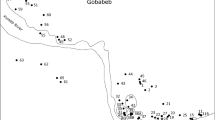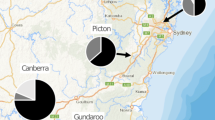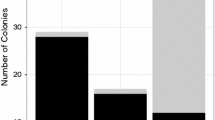Abstract.
We report the results of a comprehensive investigation of the queen size dimorphism in the North American ant Leptothorax rugatulus. Employing allozymes and microsatellites as genetic markers, we found no evidence that the gene pools of large (macrogynes) and small (microgynes) queens are distinct. Queens in polygynous colonies are related to each other, supporting the hypothesis that colonies with more than one queen commonly arise by the adoption of daughter queens into their natal colonies. The higher fat content of macrogynes, their predominance in monogynous societies and in small founding colonies, and their greater flight activity favor the view that macrogynes predominantly found colonies independently, while microgynes are specialized for dependent colony founding by readoption. When comparing the genetic structure of three different subpopulations, we found that the alternative life histories had no significant effect on population viscosity at the scale investigated.
Similar content being viewed by others
Author information
Authors and Affiliations
Additional information
Electronic Publication
Rights and permissions
About this article
Cite this article
Rüppell, .O., Heinze, .J. & Hölldobler, .B. Alternative reproductive tactics in the queen-size-dimorphic ant Leptothorax rugatulus (Emery) and their consequences for genetic population structure. Behav Ecol Sociobiol 50, 189–197 (2001). https://doi.org/10.1007/s002650100359
Received:
Revised:
Accepted:
Issue Date:
DOI: https://doi.org/10.1007/s002650100359




